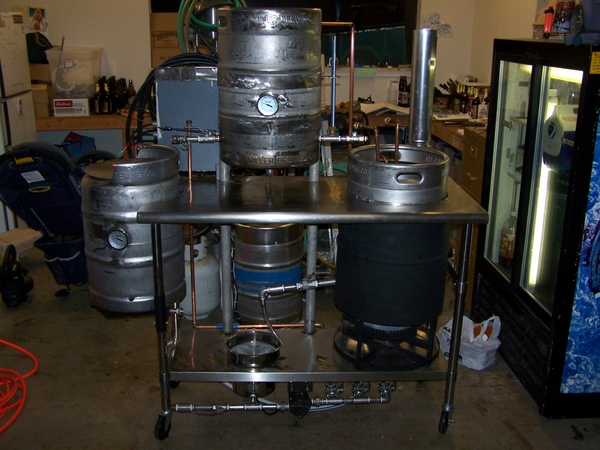There have been plenty of threads on this stuff and I've seen just about everyone's setup out there from the Pol's home depot metal shelving system to the Brutus, but I just can't get my head around a few things.
First, I'll start by saying that I've done 4 all grain brews so far using a keggle for both heating my water and boiling wort (I use a bucket to collect runnings, then dump into the kettle). My MLT has been a 48qt cooler with braid. Overall the simplicity of this setup is just fine for both 5 and 10 gallon batches.
The catch is that I have access to another 3 kegs and I've got a bit of brewstand envy. I'm looking for feedback from folks who made the leap to 3-keg systems HLT, MLT, BK.
1. Did it simplify your brewing or complicate it.
2. What would you do differently?
3. Pros/cons of single, 2-tier, or pure gravity 3 tier setups?
4. Isn't cleaning out a keg based MLT hard work?
I'm thinking that these systems present the most benefit for fly sparging and step mashing capabilities.
First, I'll start by saying that I've done 4 all grain brews so far using a keggle for both heating my water and boiling wort (I use a bucket to collect runnings, then dump into the kettle). My MLT has been a 48qt cooler with braid. Overall the simplicity of this setup is just fine for both 5 and 10 gallon batches.
The catch is that I have access to another 3 kegs and I've got a bit of brewstand envy. I'm looking for feedback from folks who made the leap to 3-keg systems HLT, MLT, BK.
1. Did it simplify your brewing or complicate it.
2. What would you do differently?
3. Pros/cons of single, 2-tier, or pure gravity 3 tier setups?
4. Isn't cleaning out a keg based MLT hard work?
I'm thinking that these systems present the most benefit for fly sparging and step mashing capabilities.





